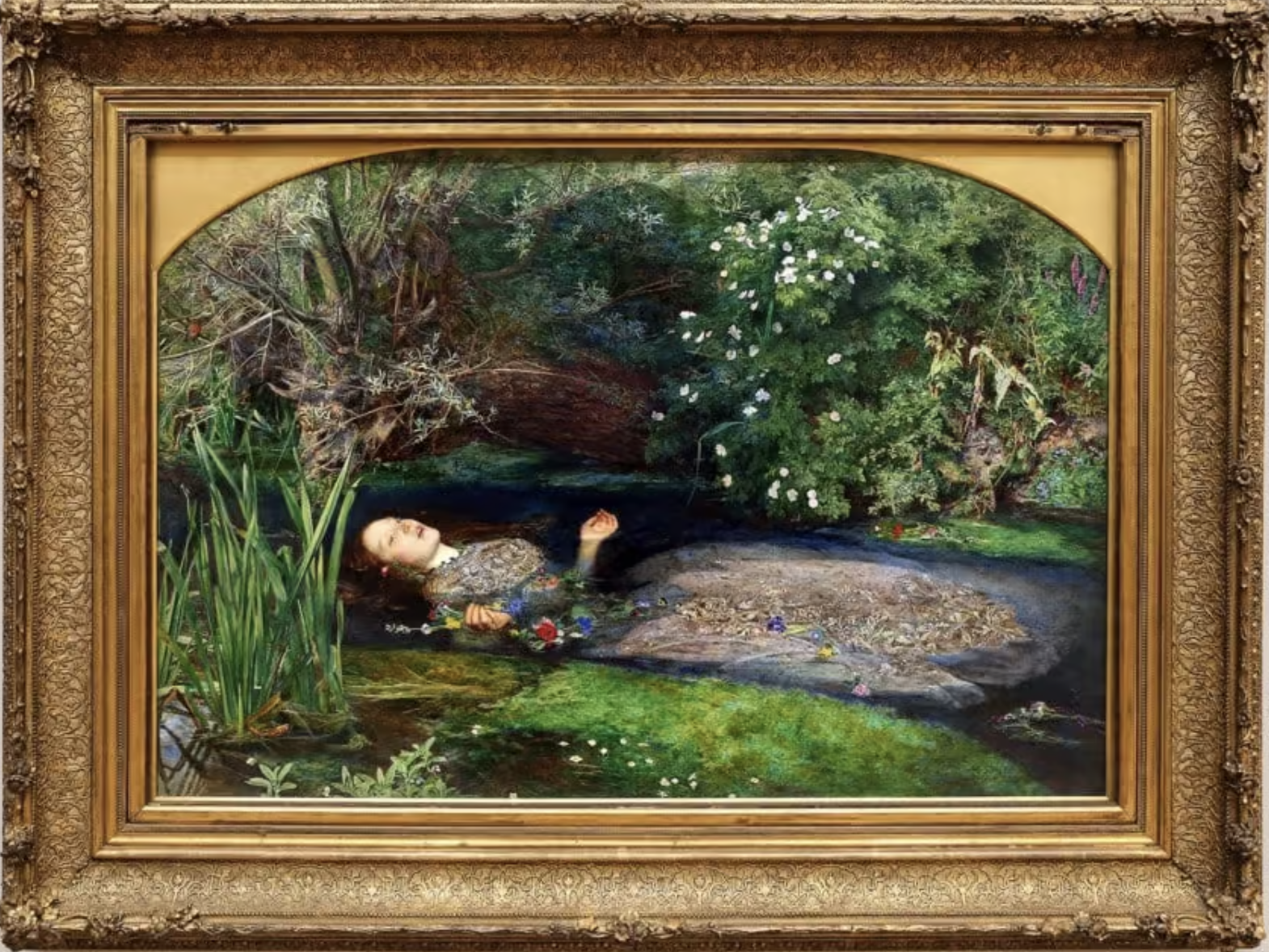by Stephanie Chatfield
The Pre-Raphaelites created art that is known for its vivd and colorful brilliance, achieved by painting white backgrounds that they would later paint over in thin layers of oil paint. Their work was meticulous and their subject matter drew inspiration from myths, legends, Shakespeare, Keats, and lovely long haired damsels that we now equate with Victorian beauty.
Frequently Asked Questions
While it can seem to be an umbrella term, it actually refers to
- Art created by members of the Pre-Raphaelite Brotherhood and their followers.
2. The literature that grew out of the Pre-Raphaelite art movement.
The Pre-Raphaelites wanted to return to the detailed, vibrant, and sincere art that existed before the time of the Renaissance painter Raphael (hence Pre-Raphaelite). They believed that after Raphael, European art had become too mechanical and formulaic.
The Pre-Raphaelite Brotherhood began in 1848 as a secret society of young artists:
- Dante Gabriel Rossetti
- William Michael Rossetti
- Thomas Woolner
- William Holman Hunt
- Frederic George Stephens
- James Collinson
- John Everett Millais.
The members of the Pre-Raphaelite Brotherhood were rebelling against the current art establishment, mainly the British Royal Academy, and its formulaic approach to art instruction. Though the Pre-Raphaelites’ goal was to remain secret, the meaning of the initials “PRB” inscribed on their paintings became public (possibly leaked by Dante Gabriel Rossetti).
In character and temperament, the members of the Brotherhood were vastly different. Millais, Rossetti, and Holman Hunt each had his own distinctive style, but one thing they all agreed on was their displeasure with the way artists were instructed at the Royal Academy. Training there was formulaic and dry, which led to generations of British art that the Pre-Raphaelites saw as dark and unimaginative. They longed to rebel against the first president of the RA, Sir Joshua Reynolds (they referred to him as Sir Sloshua).
These bright and talented idealists were radical for the time and their goals were sincere. They wanted to rejuvenate the art world, to remind the Royal Academy that paintings could be dazzling and colorful while still maintaining the dignity of accuracy.
The brotherhood believed that for the art world to be revived, it needed to return to the time before the 16th century painter Raphael, and thus, the name Pre-Raphaelite was born. In the midst of the Industrial Revolution and scientific discovery, these artists looked backward and created works that celebrated a distinctly Medieval aesthetic, yet with a realism that stunned the viewer.
The Brotherhood’s early doctrines were expressed in four declarations:
- To have genuine ideas to express;
- To study Nature attentively, so as to know how to express them;
- To sympathize with what is direct and serious and heartfelt in previous art, to the exclusion of what is conventional and self-parodying and learned by rote;
- And, most indispensable of all, to produce thoroughly good pictures and statues.
Inspired by late Medieval and early Renaissance works, the Pre-Raphaelites created paintings that were vibrantly different than the art of their contemporaries. Their efforts to stay true to nature resulted in botanical details that were painstakingly reproduced and the doctrines they adhered to resulted in paintings with an almost photographic realism. They had their critics, however, and their work was not easily accepted. (Charles Dickens was a vocal critic. Later, though, he became good friends with Millais.)
Though they were a brotherhood, there were many women in their circle that were crucial to the growth of Pre-Raphaelite art. These are the women that inspired the creation of this website. A diverse group of models, wives, family, friends, and lovers, the movement we now know as Pre-Raphaelitism is threaded with the repeated and vast contributions from these women. Several were artists themselves and most of them have familiar faces – they grace the canvasses painted by many of the brotherhood and their followers.
The Brotherhood itself did not last very long. The artists grew in different directions and their styles changed. For the most part, they stayed true to the principles that guided them in 1848, albeit in their own individual ways. The members of the Pre-Raphaelite Brotherhood and the artists they influenced had a profound effect on 19th and early 20th-century art. In fact, once you are familiar with them, you can easily spot their influence in popular culture today.
Classical mythology, Shakespearean scenes, Biblical stories, and modern themes such as the plight of fallen women, were all of interest to the Pre-Raphaelites.
The brotherhood and many of their associates were captivated by literature and wanted to create work that incorporated poetic and literary themes, as well as addressing social injustice. Their works reflected meaningful narratives, but their genius was that it didn’t merely tell a story, but often posed questions that left the viewer wondering.
More on the Pre-Raphaelites
- Birth of the Brotherhood
- Dante Gabriel Rossetti: The Romantic Rebel of the Pre-Raphaelites
- John Everett Millais: The Prodigy Who Painted Emotion
- Pre-Raphaelite List of Immortals
- Pre-Raphaelite Luminosity
- The Diaries of William Allingham
- What is the ‘Pre-Raphaelite Woman?’
- William Holman Hunt: The Visionary of Pre-Raphaelite Symbolism
- Women of the Pre-Raphaelite Circle






